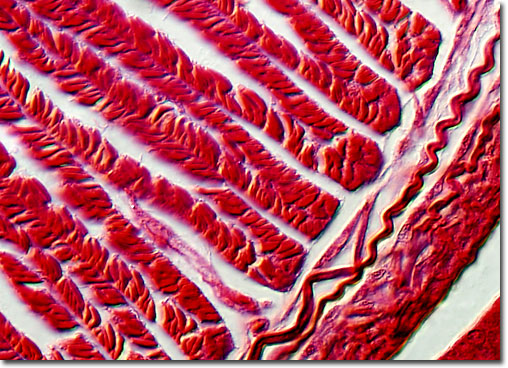|
Earthworms vary in length depending upon species and belong to the phylum Annelida, which contains the segmented worms. The common earthworm Lumbricus terrestris, known as the night crawler in the United States, rarely exceeds lengths of more than ten inches. However, some tropical species of earthworm can be up to eleven feet long. In order to move such long, tapered bodies forward, earthworms exhibit peristalsis, a wave-like motion achieved through rhythmic muscular contractions. With the additional aid of the setae that line each of their body segments, earthworms are relatively adept at wriggling their way through the soil and across the ground.
|
